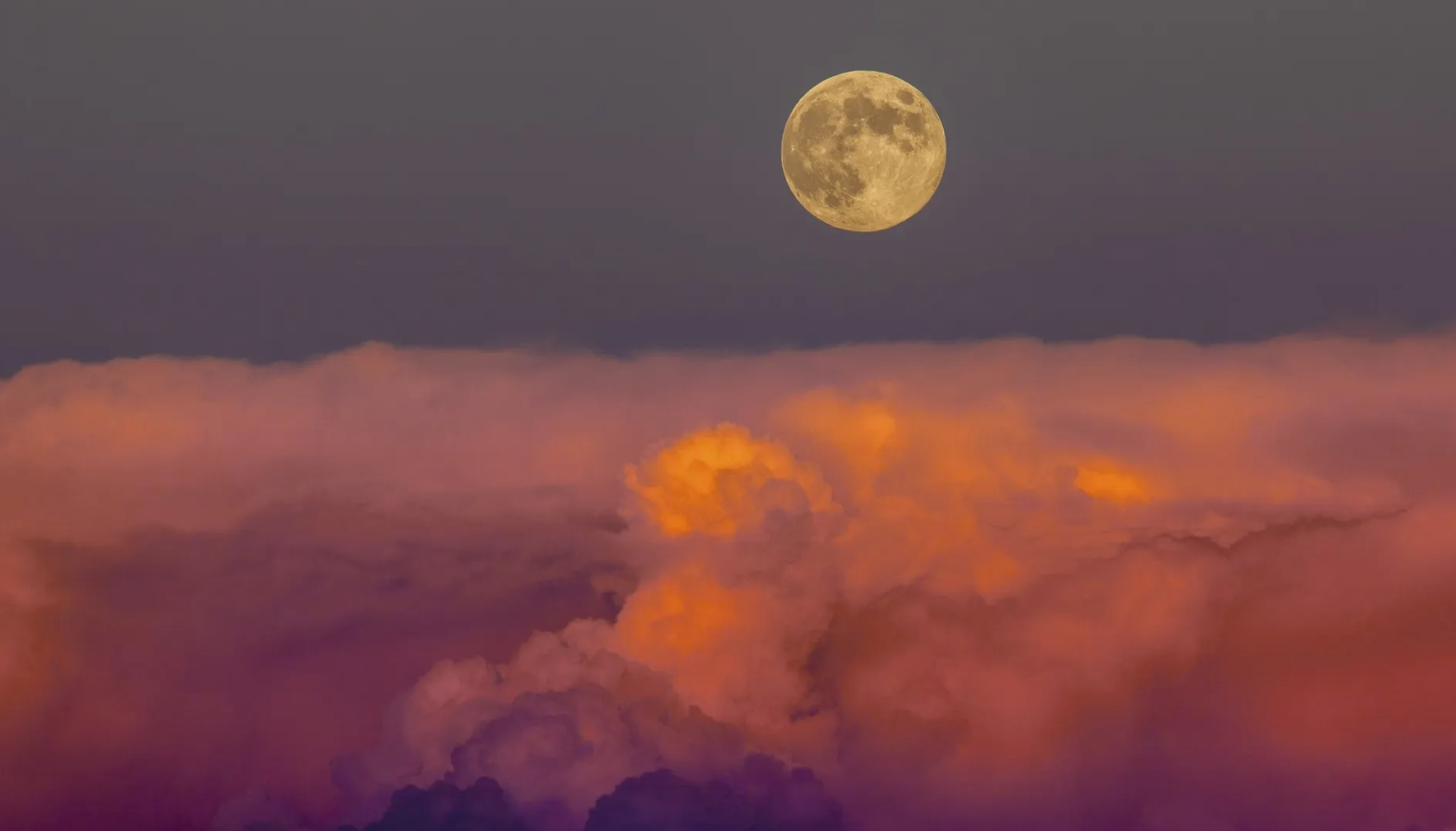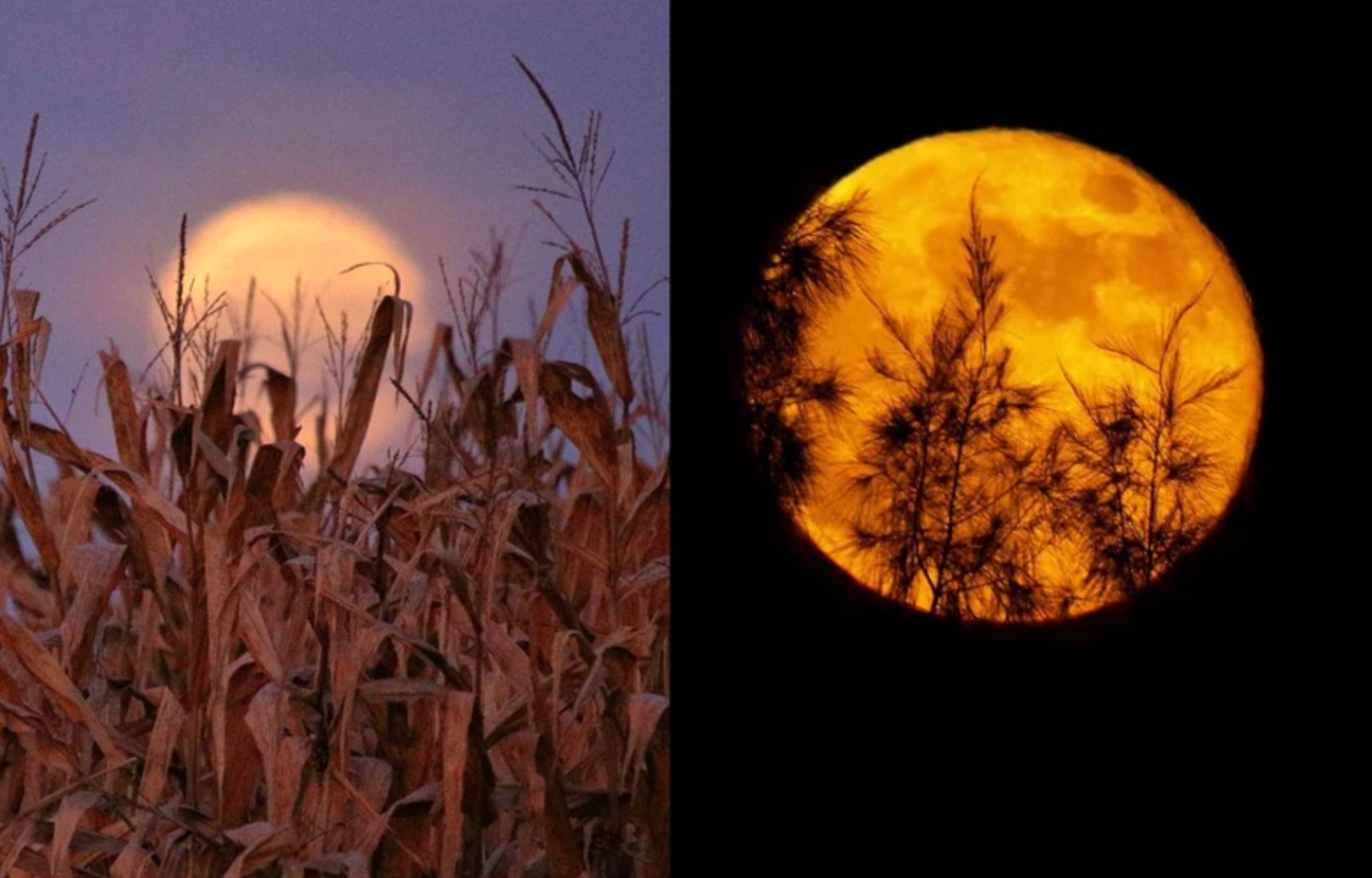The last supermoon of 2023 appears this weekend along with a special "parade" of some of the planets in the solar system

According to Space.com, the last Supermoon of 2023 appears this weekend, but that's not all. The full moon sky will also feature the performance of the two largest planets in the solar system, Jupiter and Saturn, and the smallest planet, Mercury.
The full moon of the eighth lunar month, known as the "Harvest Moon," will rise on Friday, September 29 — and it's a special one. Not only will it be the fourth consecutive Supermoon of 2023, it will also be the last Supermoon of the year, marking the end of a summer of Supermoons.
It's called the "Harvest Moon" because it appears around the time farmers in the Northern Hemisphere are ready to harvest their crops. While not as close or bright as August's supermoon, the Harvest Moon can appear deep yellow, orange, or red, especially when it first rises above the horizon.
Befitting such a special Supermoon, the "Harvest Moon" display will also feature a "parade" of planets across the sky, including the two largest bodies in the solar system, Jupiter and Saturn, as well as the smallest planet, Mercury.
The series of four consecutive summer Supermoons begins with the "Buck Moon" on July 3. This is followed by two Supermoons in August, the "Sturgeon Moon" on August 1 and the "Blue Moon" on August 30.
The term “supermoon” refers to a full moon that occurs around the time when the Moon is closest to Earth in its orbit, known as perigee. This happens because the Moon's orbit around Earth is an ellipse rather than a perfect circle, meaning that sometimes it is farther away from our planet and other times it is closer.
The Moon's close position during a Supermoon means that the Moon's disk can appear about 30% brighter and about 14% larger when viewed from Earth than it does during a typical full moon. These differences may be visible to experienced Moon watchers, but are not really noticeable to the naked eye for most people.
According to NASA, the Moon will reach perigee on Wednesday night, September 27, two days before the "Harvest Moon." According to eclipse expert and retired NASA astrophysicist Fred Espanak, when the Moon's fully illuminated surface is facing Earth, it will be about 220,000 miles (361,552 kilometers) away from our planet, closer than the Moon's average distance from Earth of about 230,000 miles (382,900 kilometers).
However, this will not be the closest or brightest Supermoon of 2023. During the "Blue Moon" on August 30, the Moon will be about 357,343 km from Earth, according to Espanak.
On the upcoming Mid-Autumn Festival night, Saturn and the largest planet in the solar system, Jupiter - will be to the left of the Harvest Moon in the constellation Aries.
Mercury will be the last planet to visit the Harvest Moon, and it will be the hardest to spot. The closest planet to the Sun, Mercury is currently at its farthest point from our star. Although visible in the morning, it disappears by evening. On Saturday, the smallest planet in the solar system will rise at around 4:30 p.m. ET, September 29. Mercury will share the sky with the full moon just over an hour before the year's last supermoon appears.

Those who miss the Harvest Moon will have to wait a while for the next Supermoon, which will also be a Harvest Moon, to rise on September 18, 2024. This will be the first of two Supermoons next year, with the second Supermoon coming a month later on October 17, 2024.
If you're hoping to see the "Harvest Moon," a telescope and binoculars are the best tools to start with.
According to Noah Petro, a scientist with the Lunar Reconnaissance Orbiter project at NASA, the Moon only changes color when it rises or sets on the horizon, or during a lunar eclipse. The reason is similar to the phenomenon of red sunrises and sunsets.
"The Earth's atmosphere scatters light, except for red or orange," Petro explained. Atmospheric factors such as clouds, smoke, and dust can also change the color and brightness of the Moon.
Moonrise is the best time to observe the large size of a supermoon. When the Moon is close to the horizon, foreground objects such as trees and rocks can give a clear sense of size. As a result, the Moon appears at its largest at this time.
According to Tin Tuc newspaper